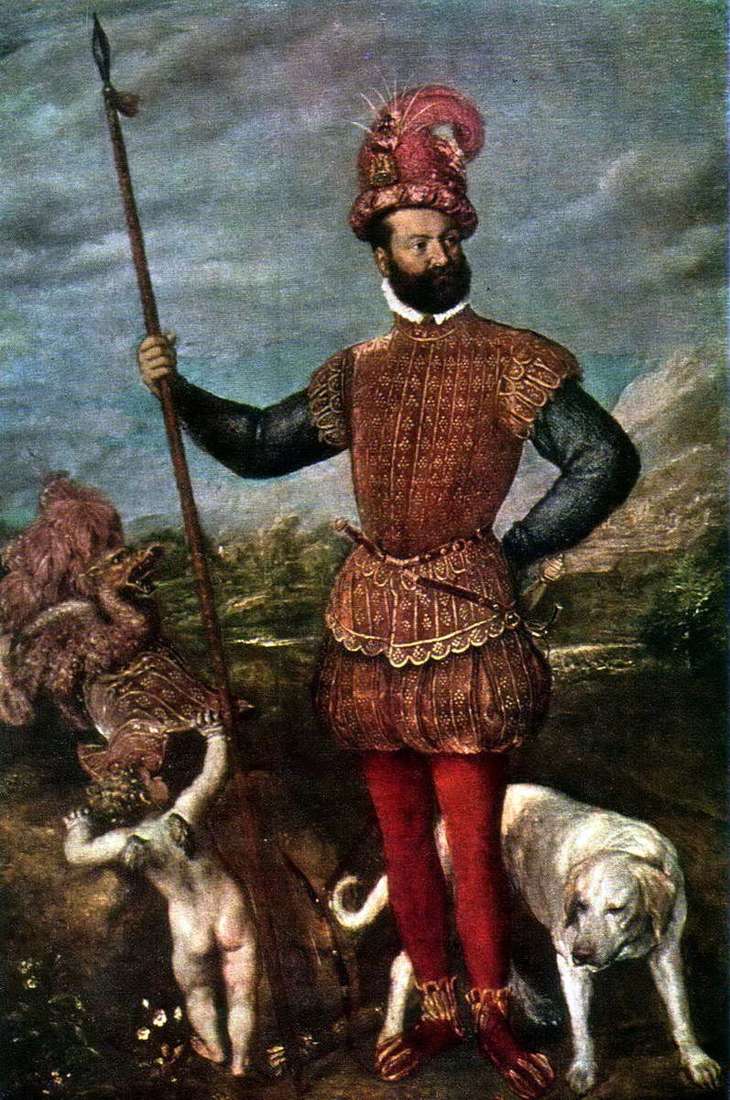
The fate of the portrait can be traced from the first half of the 18th century, when he was in French assemblies. In 1756, he was acquired by the founder of the gallery in Kassel by the Landgraf of Hessen, Wilhelm VIII. Usually the picture is identified with the portrait of Giovanni Francesco Aquaviva, duke Atri, mentioned in 1552 in one of Aretino’s letters.
Giovanni Francesco Aquaviva, a native of Naples, related by blood to the Aragonese dynasty, from his youth lived in exile at the French court and enjoyed the protection of French kings. In 1547-1548 he visited Rome, perhaps later visited Venice. However, the question of who is portrayed in the portrait is not finally resolved, since the authentic images of Duke Atri, with the exception of medals, have not been preserved, and the triumphal nature of the portrait is little consistent with what is known about the portrayed
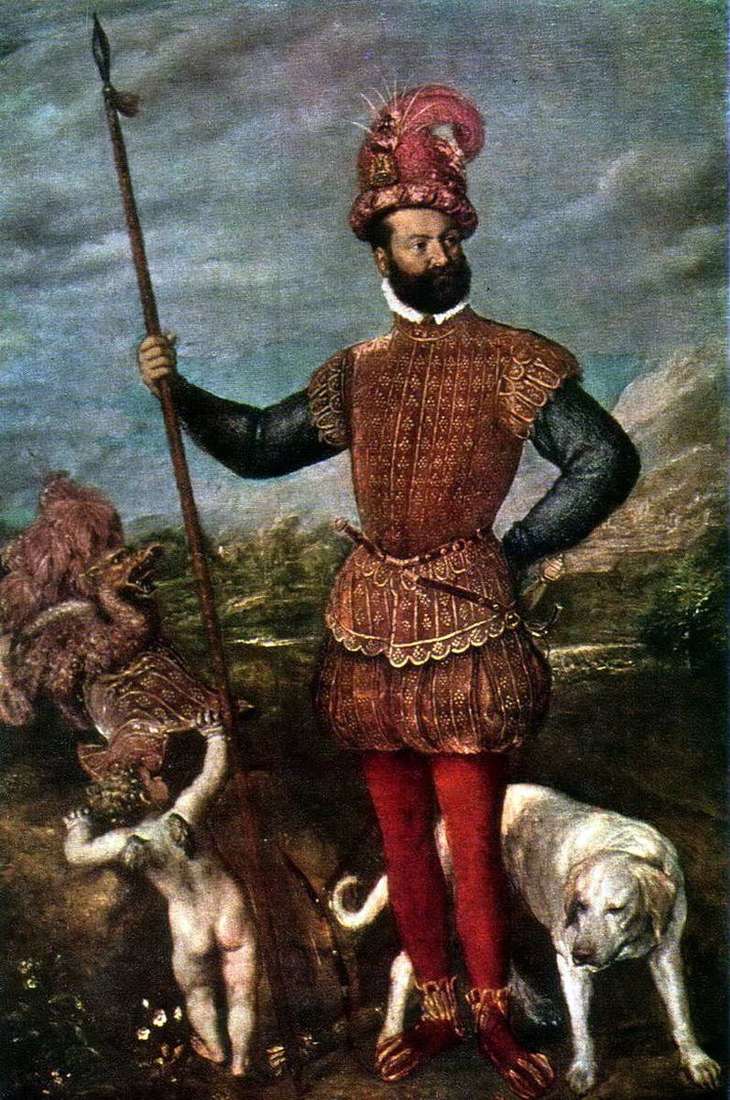 Retrato de Giovanni Francesco Aquaviva, duque Atri – Titian Vecellio
Retrato de Giovanni Francesco Aquaviva, duque Atri – Titian Vecellio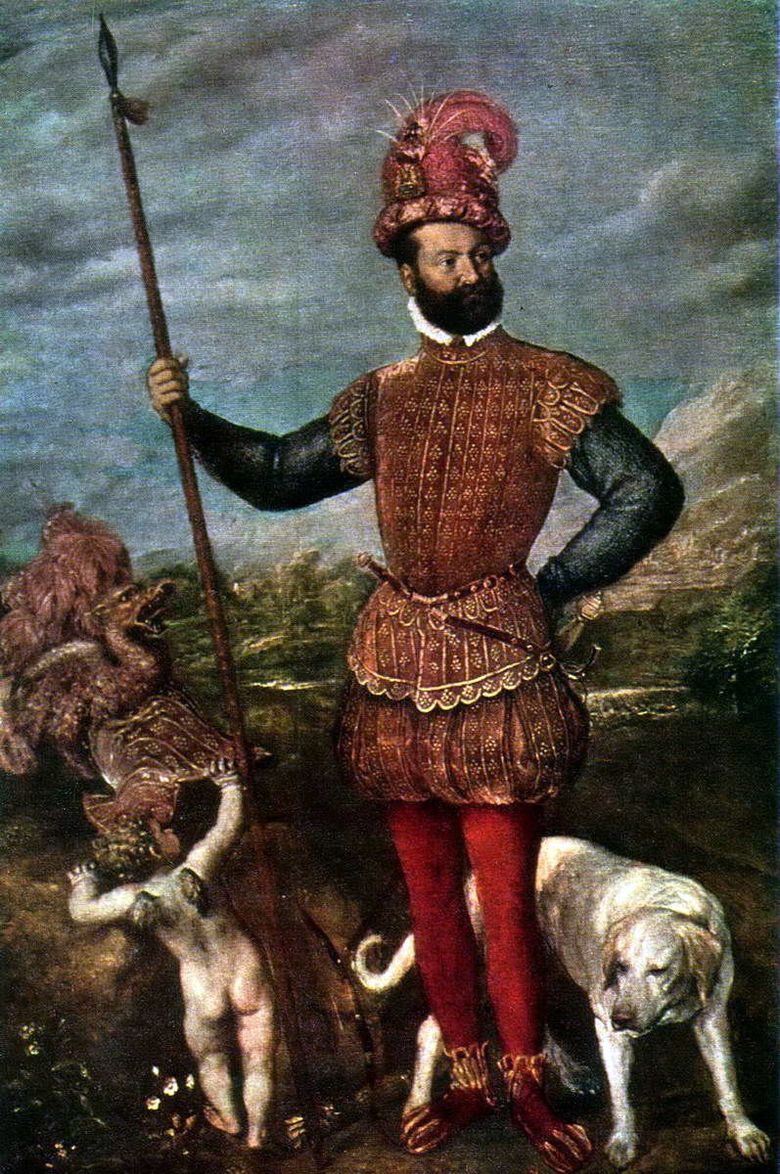 Portrait de Giovanni Francesco Aquaviva, duc d’Atri – Titien Vecellio
Portrait de Giovanni Francesco Aquaviva, duc d’Atri – Titien Vecellio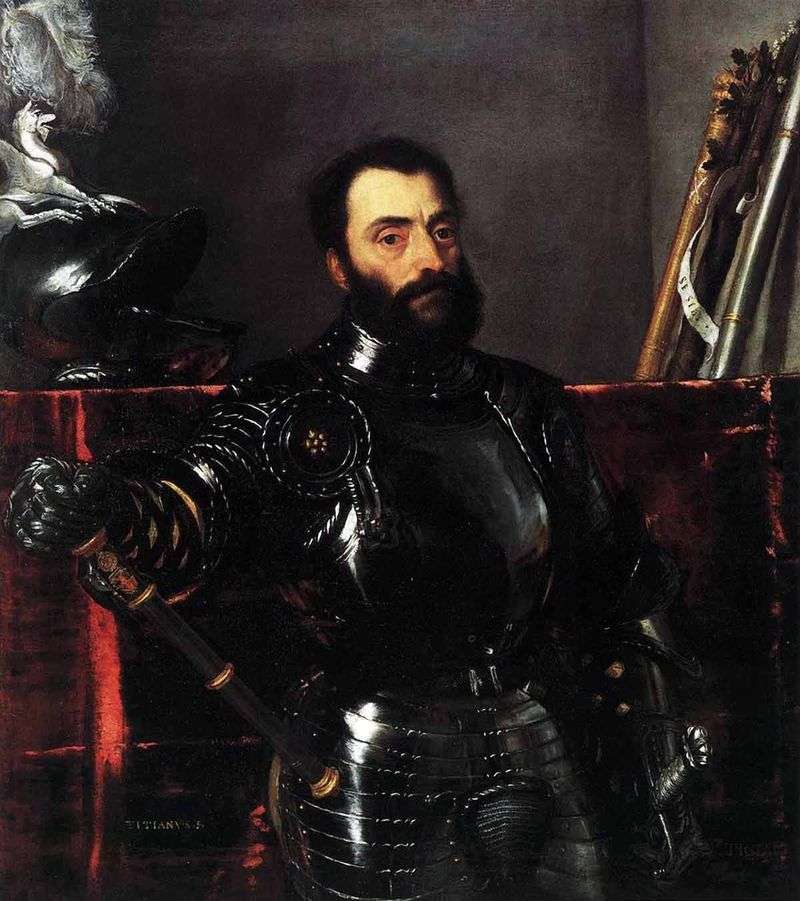 Portrait of the Urbinian Duke Francesco Maria della Rovere by Titian Vecellio
Portrait of the Urbinian Duke Francesco Maria della Rovere by Titian Vecellio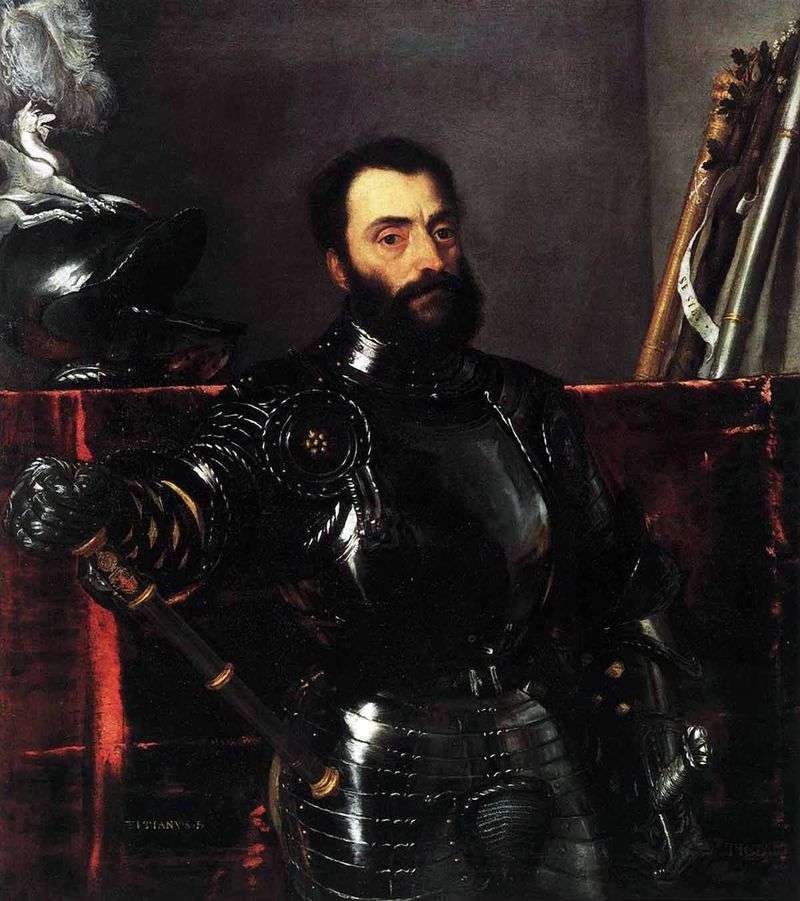 Portrait of Francesco Maria della Rovere by Titian Vecellio
Portrait of Francesco Maria della Rovere by Titian Vecellio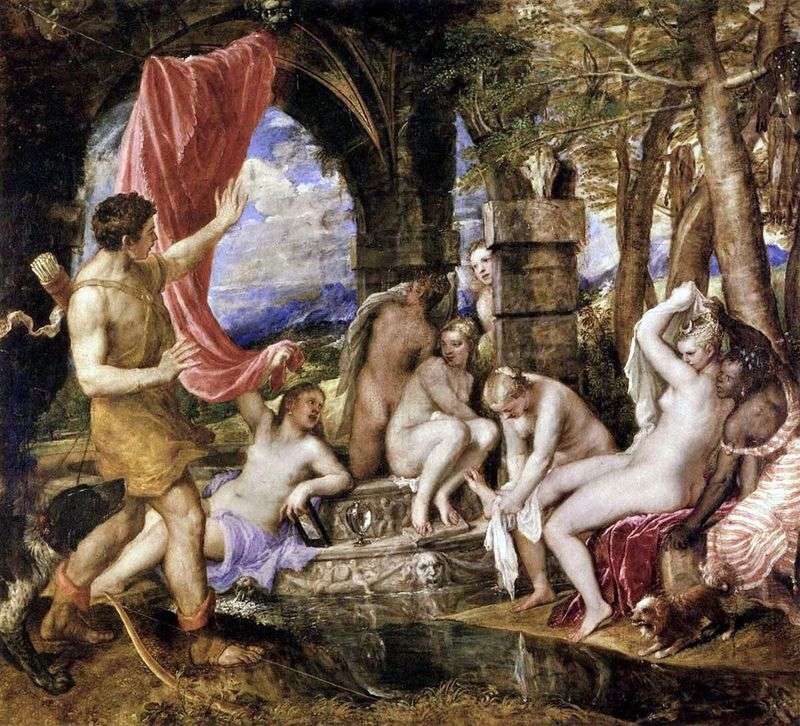 Actaeon, spying on the bathing of Diana by Titian Vecellio
Actaeon, spying on the bathing of Diana by Titian Vecellio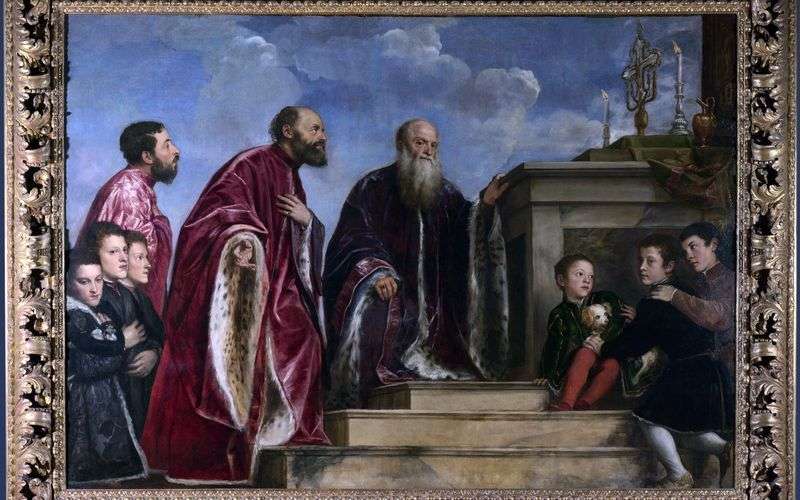 Family members before the relic of the Holy Cross by Titian Vecellio
Family members before the relic of the Holy Cross by Titian Vecellio Portrait of a young man (Portrait of Ippolito Riminaldi) by Titian Vecellio
Portrait of a young man (Portrait of Ippolito Riminaldi) by Titian Vecellio Portrait of a man with a palm branch by Titian Vecellio
Portrait of a man with a palm branch by Titian Vecellio